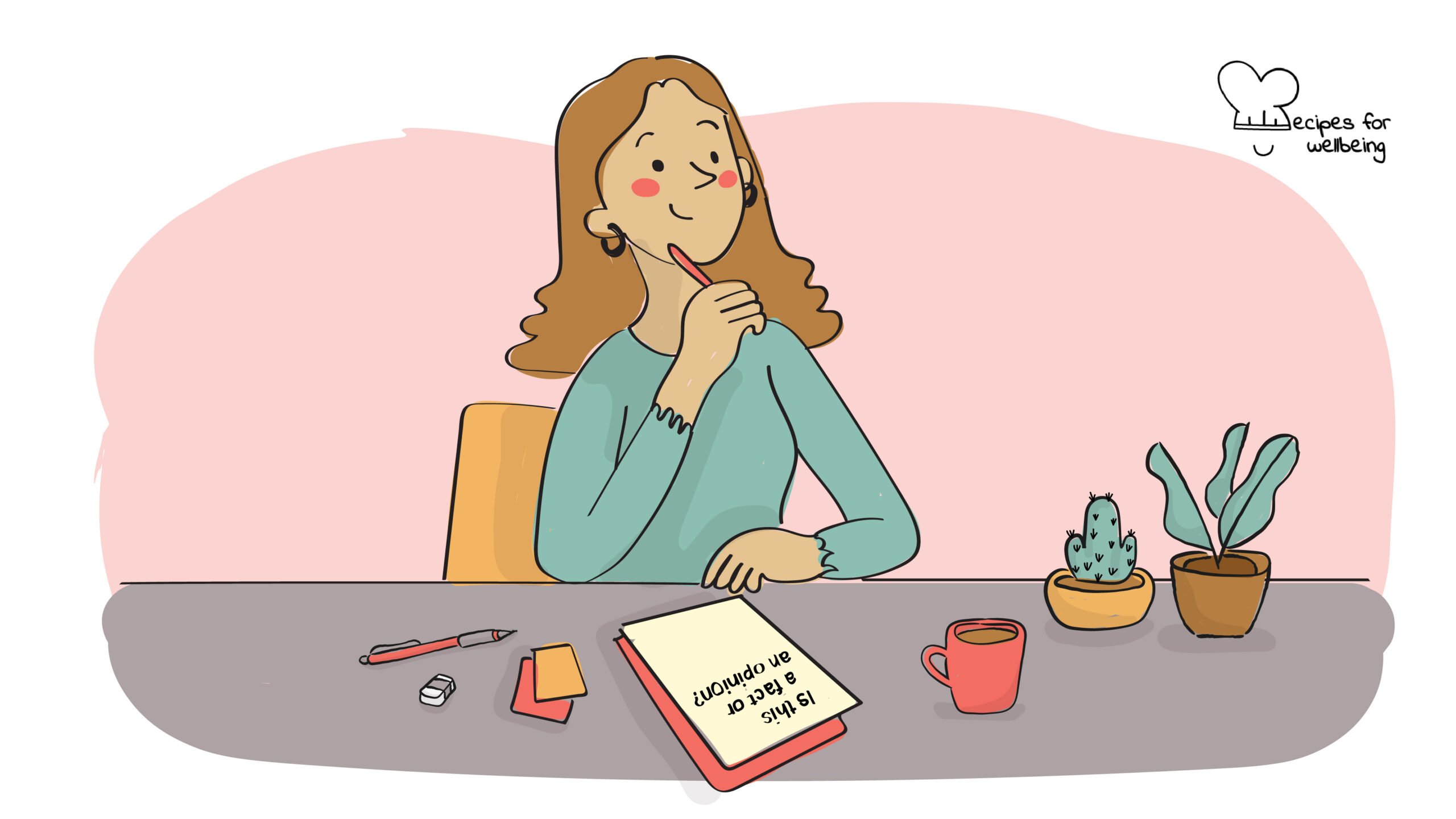
Healthy skepticism
The important and difficult job is never to find the right answers. It is to find the right question. ―Peter Drucker
 Serves: 1 person, 11-25 people, 2-10 people
Serves: 1 person, 11-25 people, 2-10 people
 Difficulty: Medium
Difficulty: Medium
 Total time: 31-60 minutes
Total time: 31-60 minutes
 Ingredients: Curiosity, Humility, 1 sheet of paper (per participant), 1 pen (per participant), 1 timer, book “Factfulness” by Hans Rosling (if you’re curious to find out more about it!), book “Questions are the Answer” by Hal Gregersen (if you’re curious to find out more about it!)
Ingredients: Curiosity, Humility, 1 sheet of paper (per participant), 1 pen (per participant), 1 timer, book “Factfulness” by Hans Rosling (if you’re curious to find out more about it!), book “Questions are the Answer” by Hal Gregersen (if you’re curious to find out more about it!)
 Wholebeing Domains: Awareness, Digital Consciousness, Liberatory Learning
Wholebeing Domains: Awareness, Digital Consciousness, Liberatory Learning
 Wholebeing Skills: Balance, Challenging, Curiosity, Digital discernment, Feedback, Inquiry, Perspective
Wholebeing Skills: Balance, Challenging, Curiosity, Digital discernment, Feedback, Inquiry, Perspective

Healthy skepticism
 Description
Description
Learning to process information to combat fake news.
We live in exciting times. The advent of the Internet has enabled us to access any information we want in a few clicks. For the first time, the problem is not that we don’t have access to enough information, but that we have access to too much of it! We recognise that this is not applicable to every human being, but it is valid for most of us.
While information accessibility is an advantage of our time, unfortunately, it can also be problematic because not all information is worthy of our attention. But even more problematic is that not all information we are exposed to is accurate. With the speed of information distribution today, fake news is a widespread phenomenon. Therefore, maintaining healthy skepticism to curate the information we receive is critical now more than ever.
What is healthy skepticism?
- Maintaining healthy skepticism means being curious. It means we are hungry to learn and inquire more in search of the objective truth, not the “truth” that is comfortable and easy to believe in, but the truth that is independent of individual biases.
- Maintaining healthy skepticism also means being humble. It means that we are ready to embrace the objective truth when it comes out, even when we have to change our minds.
- More importantly, maintaining healthy skepticism focuses on how to think rather than what to know. It is less about accumulating information as much as possible and more about how to process the information we have. In life, we will face new situations, experiences, challenges, etc. and to navigate them, how we think matters more than what we know.
About curiosity and humility
Curiosity and humility are the two important traits to develop and maintain healthy skepticism. They also help us truly celebrate our humanness. Yes, human beings can only know so much – this limitation should humble us; and at the same time, human beings have a remarkable capacity to learn. This learning capacity can be unlocked when curiosity is maintained, but humility is also important to keep us interested.
Asking questions
When presented with information, maintaining healthy skepticism means we engage with the information (and the giver of information) with curiosity by asking questions: How do I know if this is true or not true? Is this a fact or an opinion? Is this based on data? Who has the data? Does the data come from a reliable source? Is there any evidence that validates it? Who may benefit from the spreading of this information? These are some of the questions that we can ask to dig deeper. The intention is not to outright reject it, but to understand better so we know what to do with the information received.
However, it is important to note that not all questions bear the same value. Some questions are more useful than others and an indicator of a good question is whether it helps us organise our thinking around what we don’t know. If the answer to our question moves us closer to the objective truth, then we are on the right track. Interestingly, the ability to pose the right question comes from exploring the pool of questions. For this, we need an environment where questions are welcome and celebrated, regardless of their quality. The following recipe guides you through an activity called “Question Burst” which helps you explore questions and can be done individually or in a group, depending on your context.
This activity has been gifted by our wellbeing content partner Nadya Saib of Wangsa Jelita and has been featured in their 2021 Well-being Journey Journal. It has been inspired by Nadya’s experience in Neil deGrasse Tyson’s MasterClass The Cosmic Perspective, and the books Factfulness by Hans Rosling (with Ola Rosling and Anna Rosling Ronnlund) and Questions are the Answer by Hal Gregersen.
 Steps
Steps
Step 1 – Set the stage (10’)
Take a piece of paper and a pen. Select the topic you want to explore and write it down at the top of the page. Before starting, run a quick emotional check-in by reflecting on the following: How do I feel about this topic? Write that down too. If you are doing this in a team, briefly make sure everyone knows what the topic is without giving too many details that include your opinion. Allow your team to also briefly share their check-in reflections.
Step 2 – Generate questions (4’)
Set a timer to four minutes. Spend the next four minutes writing down all the questions that come to your mind. Do not focus on the answers. No comments or judgments are allowed – just questions.
Step 3 – Unpack the questions (16’)
When time is up, analyse the questions you wrote down. Select the ones that help you organise your thoughts. Then, expand on those questions. We recommend using the classic “five–whys” tool, which consists of asking “why?” five times, e.g. Why do I think this question is important? Why is the reason I give to the previous question important? This process helps you gain more clarity around the topic you choose. Ask 5 why questions for each of the top questions you selected.
Step 4 – Commit to the quest (10’)
Decide what you want to do as a follow-up. If the topic is something you care about, take action.
Step 5 – Bring closure (5’)
To close the activity, run a quick emotional check-out, asking yourself (and the group): How do I feel about the topic after this exercise? If you are in a group, allow everyone to quickly share their check-out reflections.
Step 6 – Personal testimony is “personal”
It is important to remember that personal testimonies are “personal”. Let’s make it concrete: someone on social media shares that consuming a particular food helps them maintain their health. When presented with such info, a healthy skeptic will look for valid evidence to prove the truth of the claim. However, it is not always about inquiring what qualification that person has to make a claim. All of us should be able to share our views and discuss anything, as long as we commit to sharing evidence-based information.
Also, please note there is a difference between sharing and influencing. If it is just sharing, it does not matter what people say and/or write. However, most of us have, to a certain extent, the power to influence others, which requires us to act responsibly.
- As a receiver of information: Just because someone has influence over us, it does not mean that we have to accept everything they share as objective truth. We need to remind ourselves that personal testimony is personal.
- As a giver of information: We need to train ourselves to be more aware of the words we choose when we share information. For example, “The book is helpful” is not the same as “I think the book is helpful.” If the information is subjective, it is better to frame it accordingly starting with: I think…, I feel…, I believe…, I like…, My assumption is…, My observations are…, My opinion is…, My experience is…, My hypothesis is… These are some suggestions to share a personal testimony. And anytime we want to share a perspective, including a piece of valid evidence, we can say “This is my reference for…”.


 Arabic
Arabic Chinese (Simplified)
Chinese (Simplified) Dutch
Dutch English
English French
French German
German Italian
Italian Portuguese
Portuguese Russian
Russian Spanish
Spanish